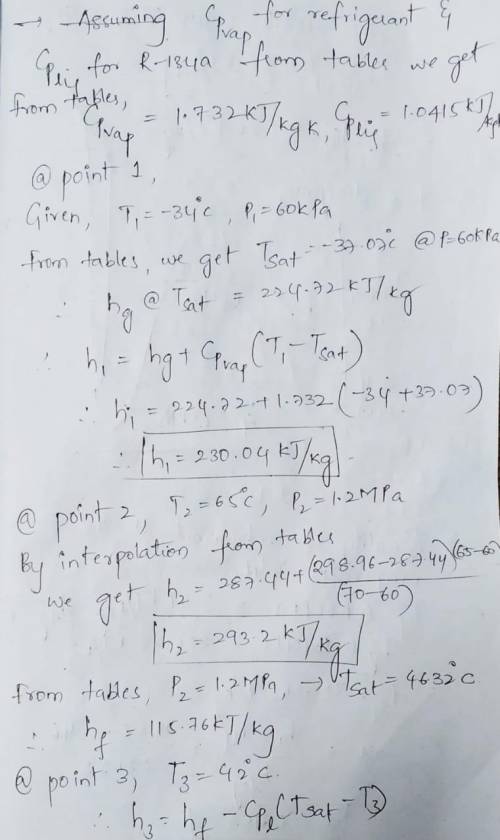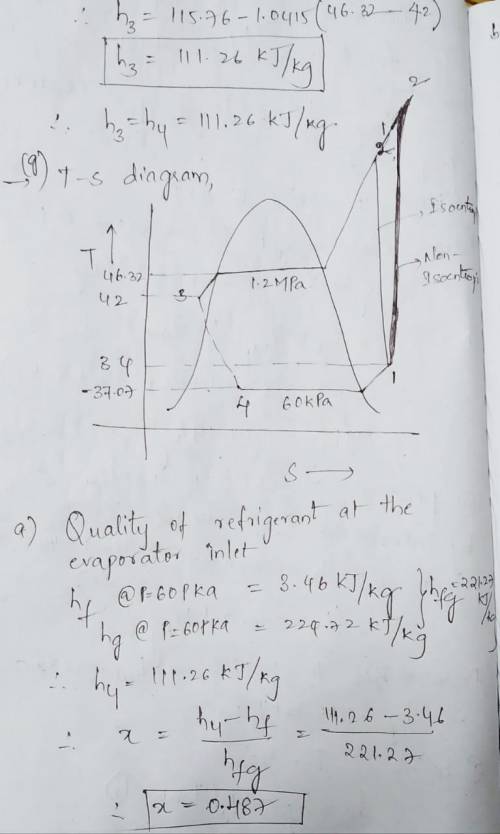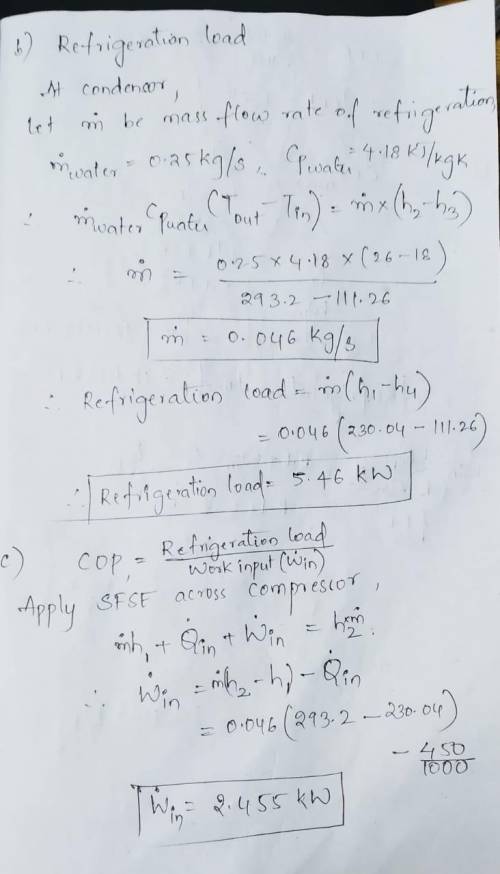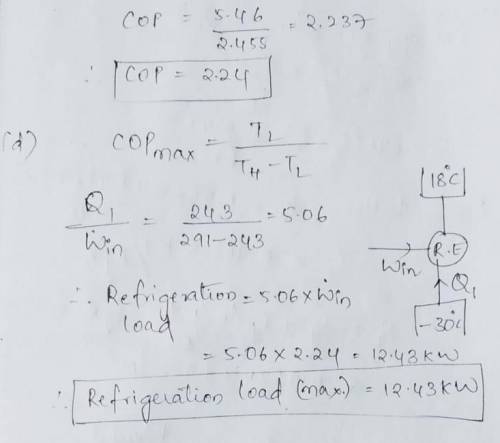
Engineering, 16.04.2020 01:47 MemnochRize
A commercial refrigerator with refrigerant -134a as the working fluid is used to keep the refrigerated space at -30C by rejecting its waste heat to cooling water that enters the condenser at 18C at a rate of 0.25 kg/s and leaves at 26C. The refrigerant enters the condenser at 1.2 MPa and 65C and leaves at 42C. The inlet state of the compressor is 60 kPa and -34C and the compressor is estimated to gain a net heat of 450 W from the surroundings. Determine
a. the quality of the refrigerant at the evaporator inlet,
b. the refrigeration load,
c. the COP of the refrigerator, and
d. the theoretical maximum refrigeration load for the same power input to the compressor.

Answers: 3


Another question on Engineering

Engineering, 03.07.2019 14:10
Amass of m 1.5 kg of steam is contained in a closed rigid container. initially the pressure and temperature of the steam are: p 1.5 mpa and t 240°c (superheated state), respectively. then the temperature drops to t2= 100°c as the result of heat transfer to the surroundings. determine: a) quality of the steam at the end of the process, b) heat transfer with the surroundings. for: p1.5 mpa and t 240°c: enthalpy of superheated vapour is 2900 kj/kg, specific volume of superheated vapour is 0. 1483 m/kg, while for t 100°c: enthalpy of saturated liquid water is 419kj/kg, specific volume of saturated liquid water is 0.001043m/kg, enthalpy of saturated vapour is 2676 kj/kg, specific volume of saturated vapour is 1.672 m/kg and pressure is 0.1 mpa.
Answers: 3

Engineering, 04.07.2019 18:10
Thermal stresses are developed in a metal when its a) initial temperature is changed b) final temperature is changed c) density is changed d) thermal deformation is prevented e) expansion is prevented f) contraction is prevented
Answers: 2

Engineering, 04.07.2019 18:20
Air is compressed isentropically from an initial state of 300 k and 101 kpa to a final temperature of 1000 k. determine the final pressure using the following approaches: (a) approximate analysis (using properties at the average temperature) (b) exact analysis
Answers: 1

Engineering, 04.07.2019 19:20
Acommercial grade cubical freezer, 4 m on a side, has a composite wall consisting of an exterior sheet of 5.0-mm thick plain carbon steel (kst= 60.5 w/m k), an intermediate layer of 100-mm thick polyurethane insulation (kins 0.02 w/m k), and an inner sheet of 5.0- mm thick aluminium alloy (kal polyurethane insulation and both metallic sheets are each characterized by a thermal contact resistance of r 2.5 x 104 m2 k/w. (a) what is the steady-state cooling load that must be maintained by the refrigerator under conditions for which the outer and inner surface temperatures are 25°c and -5°c, respectively? (b) for power saving purpose, which wall material should be increased/reduced in. thickness in order to reduce 50% of the cooling load found in part (a)? redesign the thickness of the proposed material. 177 w/m-k). adhesive interfaces between the q=575.93 w
Answers: 2
You know the right answer?
A commercial refrigerator with refrigerant -134a as the working fluid is used to keep the refrigerat...
Questions


History, 01.12.2021 02:10

Chemistry, 01.12.2021 02:10

Physics, 01.12.2021 02:10


Chemistry, 01.12.2021 02:10


Mathematics, 01.12.2021 02:10


English, 01.12.2021 02:10

Mathematics, 01.12.2021 02:10

Mathematics, 01.12.2021 02:10

Mathematics, 01.12.2021 02:10

Chemistry, 01.12.2021 02:10


English, 01.12.2021 02:10










